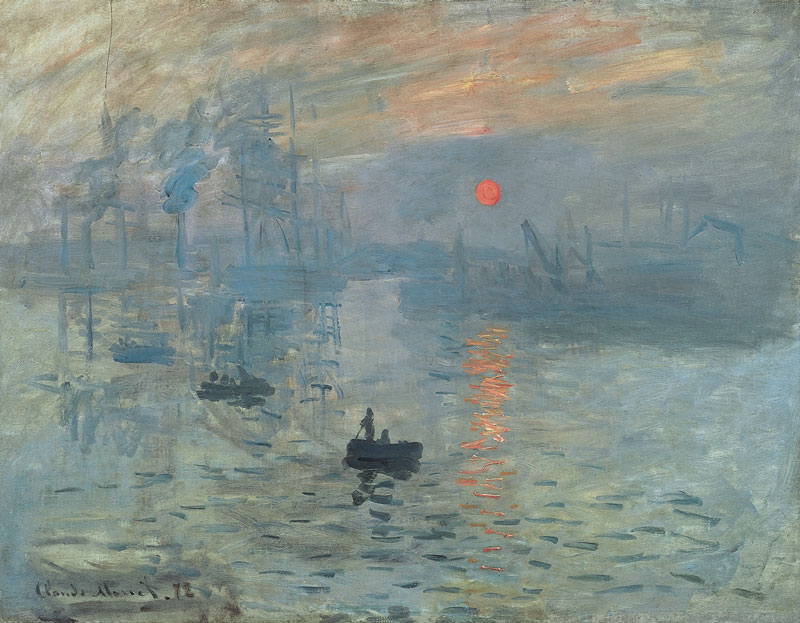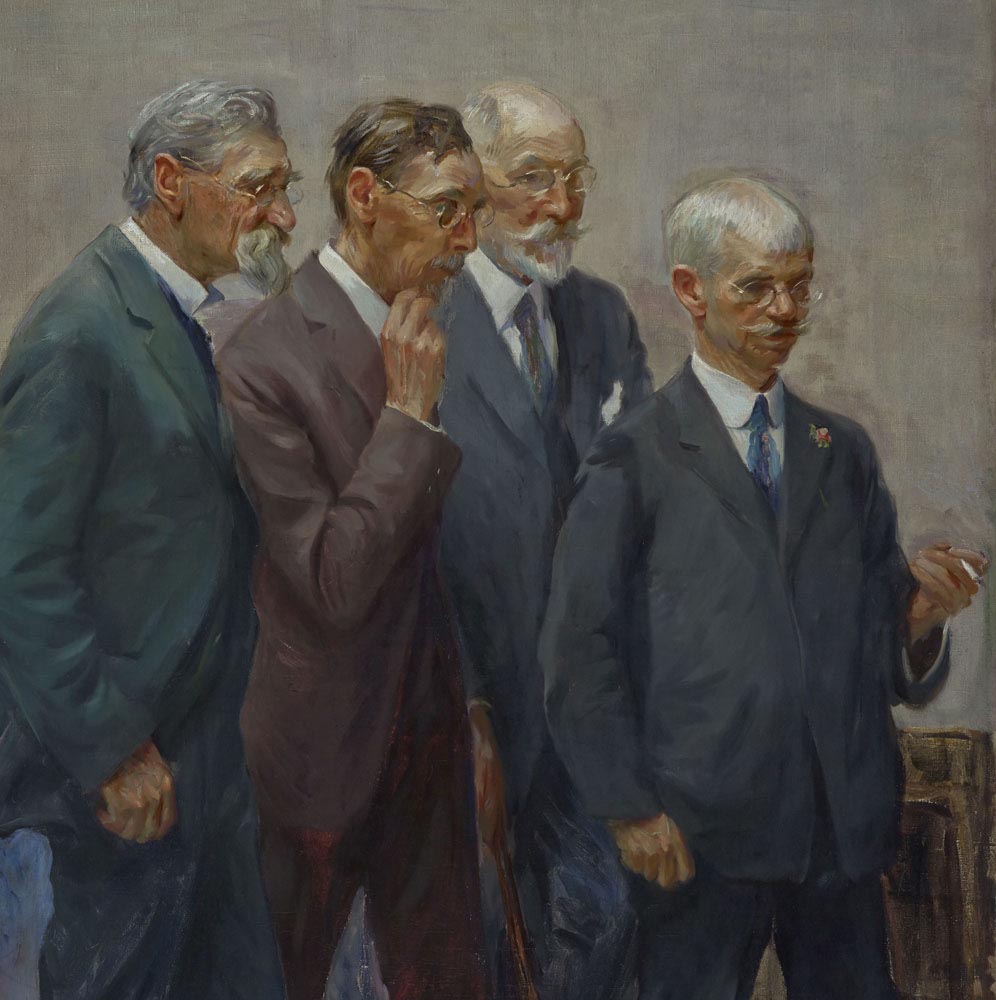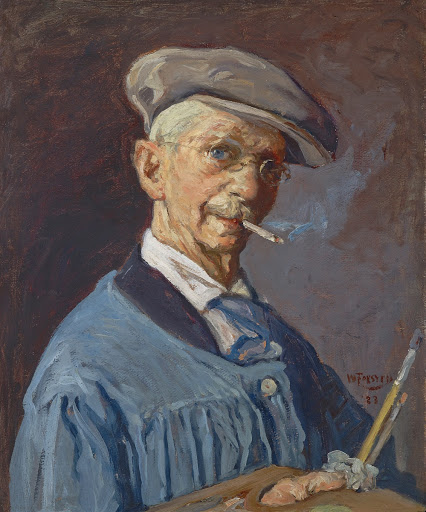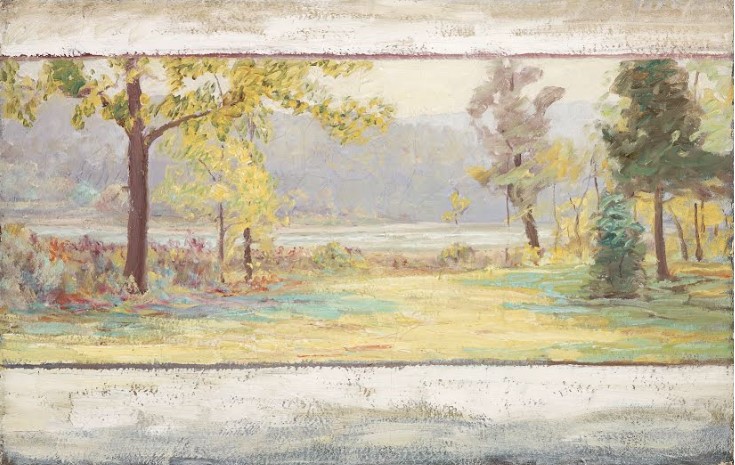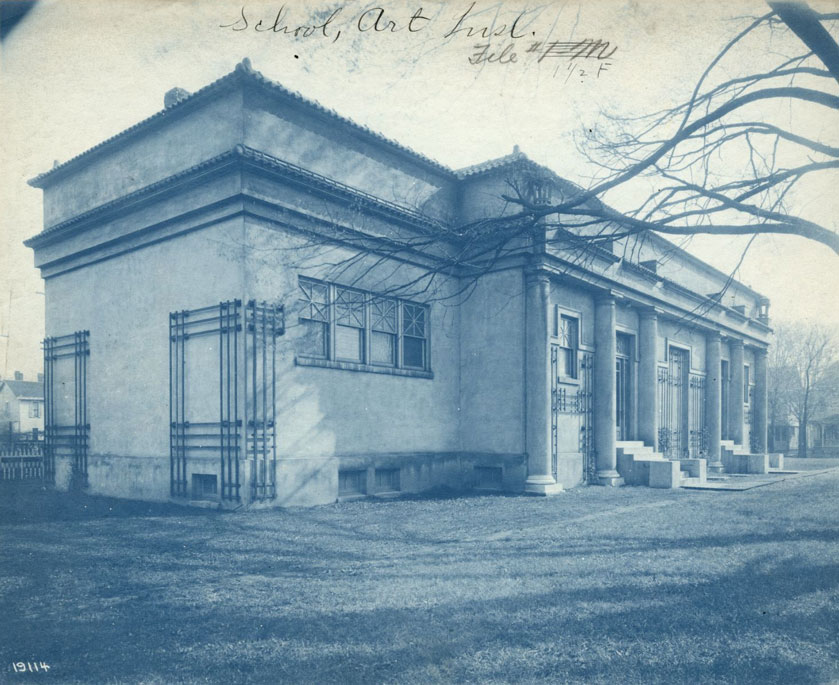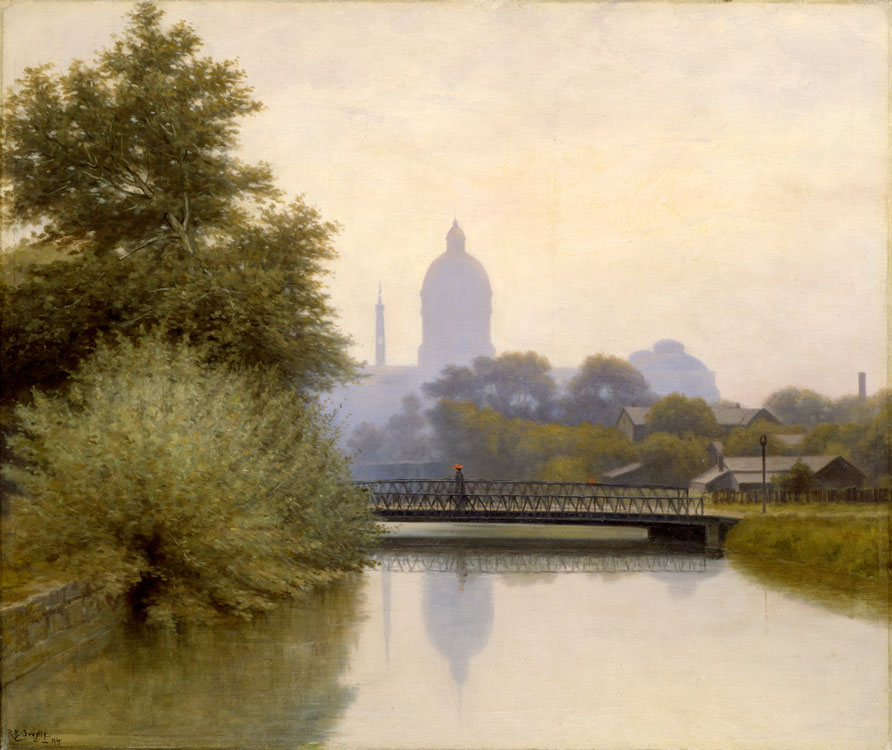The Hoosier Group

The artists who became known as the Hoosier Group — T. C. Steele, Richard Gruelle, William Forsyth, J. Ottis Adams, and Otto Stark matured during what is considered Indiana’s “Golden Age.” The state experienced great cultural growth during the 19th and early 20th centuries, and Hoosier authors and artists gained national notoriety through portrayals of Indiana’s rustic past and bustling present.

Wayman’s painting features four of the five members of the Hoosier Group: T. C. Steele, Otto Stark, J. Ottis Adams, and William Forsyth.
© Wayman Adams, Courtesy of Indianapolis Museum of Art at Newfields.
Though they all created local landscapes, each member of the Hoosier Group had different training. As was the case with many artists from the Midwest, Steele, Adams, and Forsyth all studied at the Royal Academy in Munich, Germany. Stark chose to study in Paris at the Académie Julian, a private art school founded in 1867, and Gruelle was completely self-taught.
By the end of their various studies, all members of the Hoosier Group eventually settled in Indianapolis. The birth of the “Hoosier Group” as we now know them, however, did not occur until the 1890s.
In November 1894, the Art Association of Indianapolis brought together the works of Steele, Stark, Forsyth, and Gruelle in the Exhibit of Summer work of T. C. Steele, William Forsyth, R. B. Gruelle, and Otto Stark at the Denison Hotel in downtown Indianapolis. In December, the Central Art Association picked up the exhibition and brought it to sculptor Lorado Taft’s Chicago studio, where several of Adams’ works were added. Critics lauded the exhibition, titled Five Hoosier Painters, and identified these artists as a new and distinctive school of painters. Thus, the Hoosier Group was born.
By celebrating the everyday experiences and the quiet beauty of Indiana in their work, the Hoosier Group became the premier representatives of “modern art” in the Midwest.
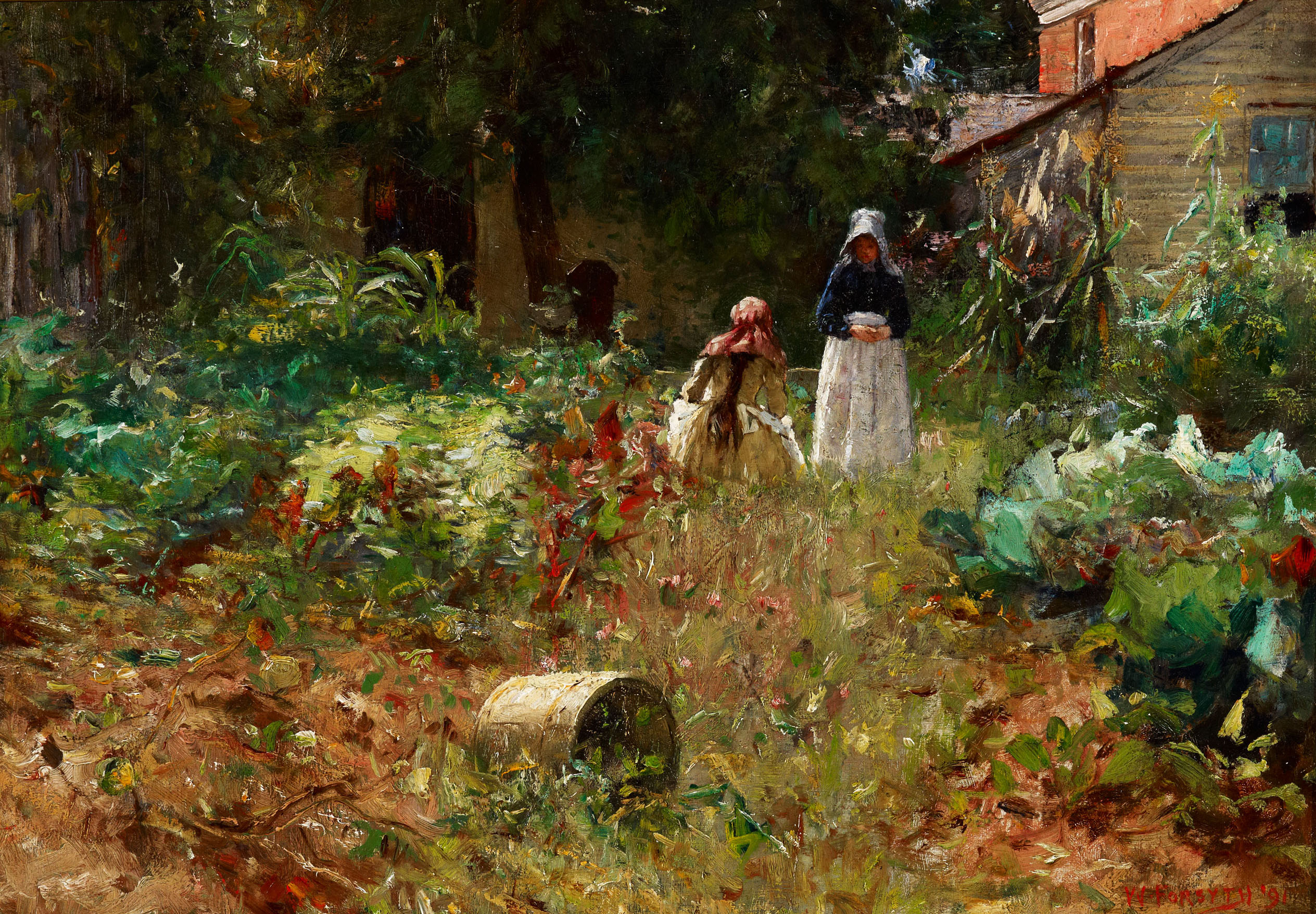
Courtesy of Indianapolis Museum of Art at Newfields.
–William Forsyth



